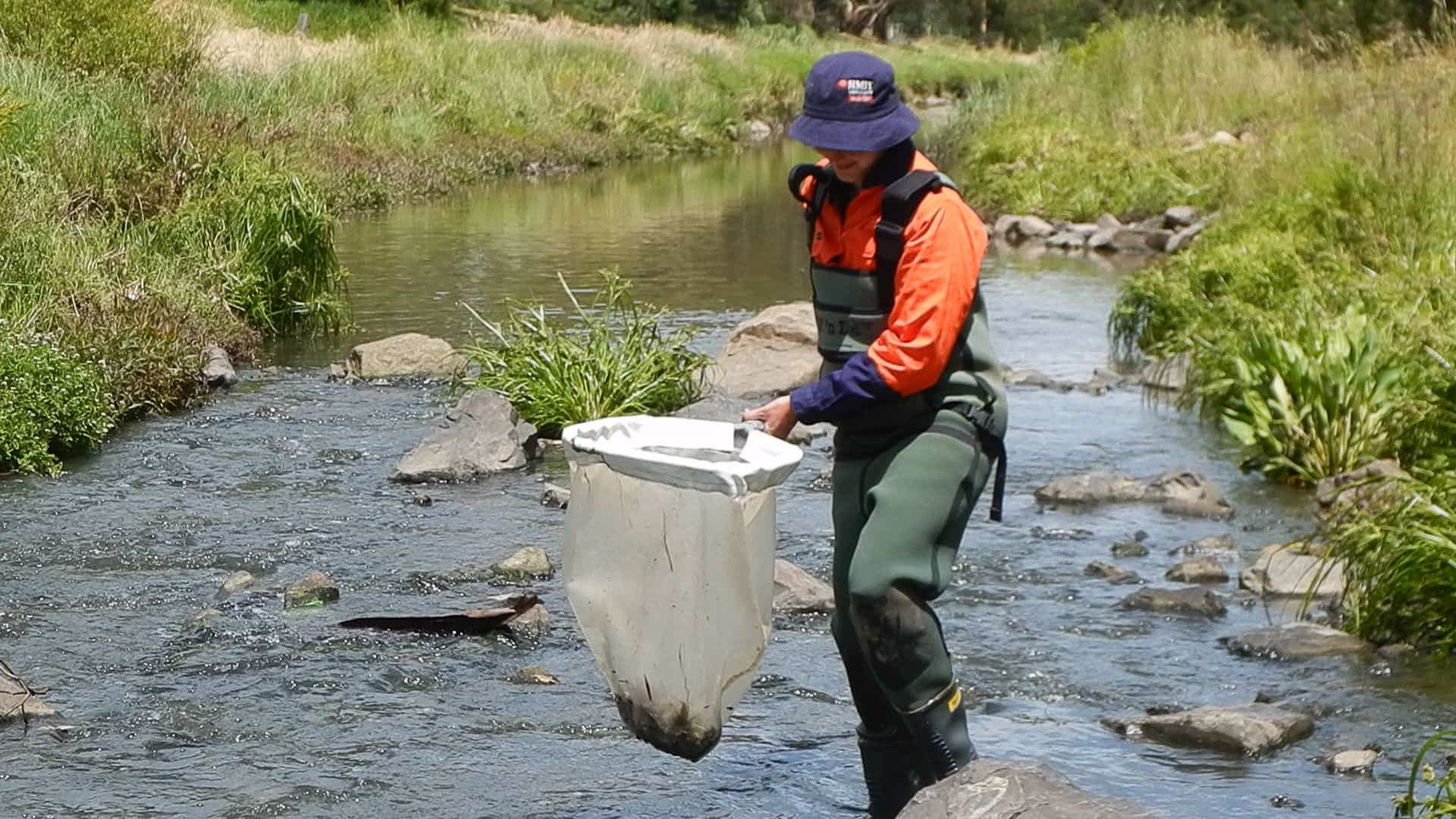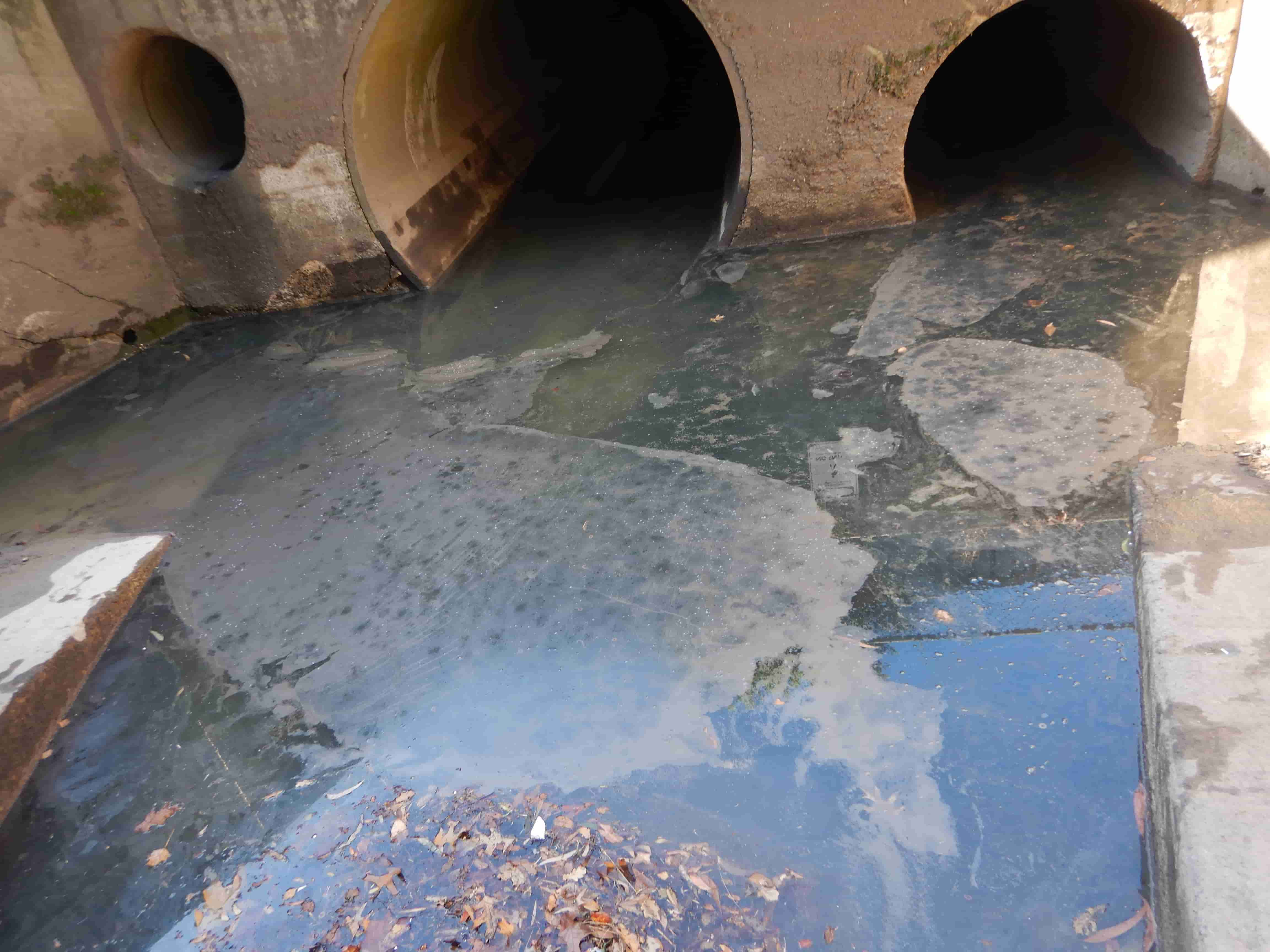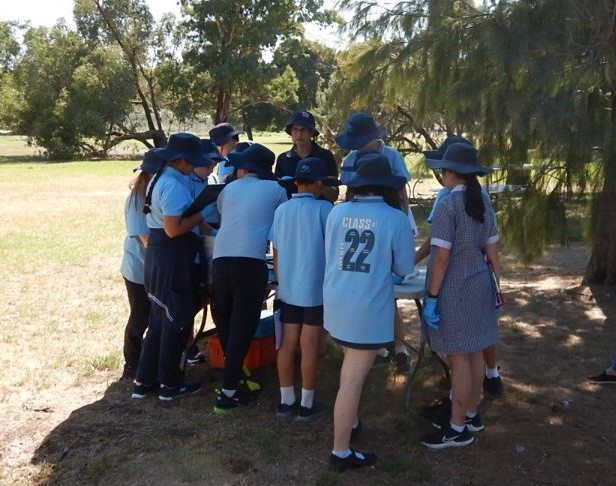Background
The Enhancing our Dandenong Creek (EoDC) project is a collaboration between Melbourne Water, Knox City Council, South East Water, Yarra Valley Water, Friends of Dandenong Creek and RMIT to manage the impacts of sewage outflows into the popular urban creek, improve amenity and liveability, reduce stormwater pollution, and create habitats for native fish.
Rather than undertake a conventional, high-cost sewer upgrade to manage the risk of overflows into the creek, Melbourne Water worked with the Environment Protection Authority (EPA) to investigate alternative ways to improve water quality and deliver measurable on-ground benefits. CAPIM (now AQUEST/ A3P @ RMIT University) were engaged to investigate the main sources of ecological degradation in Dandenong Creek.
Following the successful delivery of a 5-year program of works, a further 5-year program (EoDC2) has commenced.
 A researcher collecting water bug samples in Dandenong Creek using a net
A researcher collecting water bug samples in Dandenong Creek using a net
Key Points
- Multiple lines of evidence were used to investigate ecological degradation. Sampling has been undertaken including Macroinvertebrate (water bug) sampling, fish, algae, toxicity tests and passive samplers.
- The results found that pollution is impacting the flora and fauna of Dandenong Creek, with several types of pollutants found including metals and pesticides.
- Several sources of pollution were detected, with the most detrimental originating from industrial estates.
- Currently, there is a related project investigating how to reduce pollution from industrial estates, see A3P Project: A1.5 Identification of cost-effective opportunities for addressing pollutants from industrial catchments
- This project is investigating structural and non-structural solutions to reduce pollution. Structural solutions include trialling media to intercept pollutants (e.g. zinc and synthetic pyrethroids) to remove them prior to discharge to waterways. Non-structural methods include behaviour change, incentives, and compliance.
- For Dandenong Creek, we continue to
- monitor and source pollution in the catchment,
- develop a structural solution for Old Joe’s Creek with Melbourne Water to implement what we have learnt,
- continue to provide scientific advice to the EoDC2 Pollution Working Group and
- deliver The Creek Project- A project where students investigate water quality and understand what can be done to reduce pollution, promote biodiversity and improve the health of Dandenong Creek
 Polluted water in a section of Dandenong Creek
Polluted water in a section of Dandenong Creek
 A group of students being guided through a water quality investigation
A group of students being guided through a water quality investigation
Expected completion date
On-going since 2018
Links
OzWater ’15 Vic Winner- Research Award; OzWater ’18 Vic Winner Program Innovation Award; OzWater ’19 National Winner Program Innovation Award; Stormwater Victoria 2018 Award for Excellence Industry Pollution Prevention Program 2019, Stormwater Vic ’20 Nominated for National Research Award
- More about the Enhancing Our Dandenong Creek Project
- Melbourne Water projects recognised at Stormwater Victoria Awards, 9 Dec 2019
For more information on this project, please contact Claudette.Kellar@rmit.edu.au or Monica.Tewman@rmit.edu.au, or visit Melbourne Water.
#EoDC #MultipleLinesOfEvidence #PollutionTracking #PollutionSourcing #PollutionAdvice #DandenongCreek #IndustrialPollution


